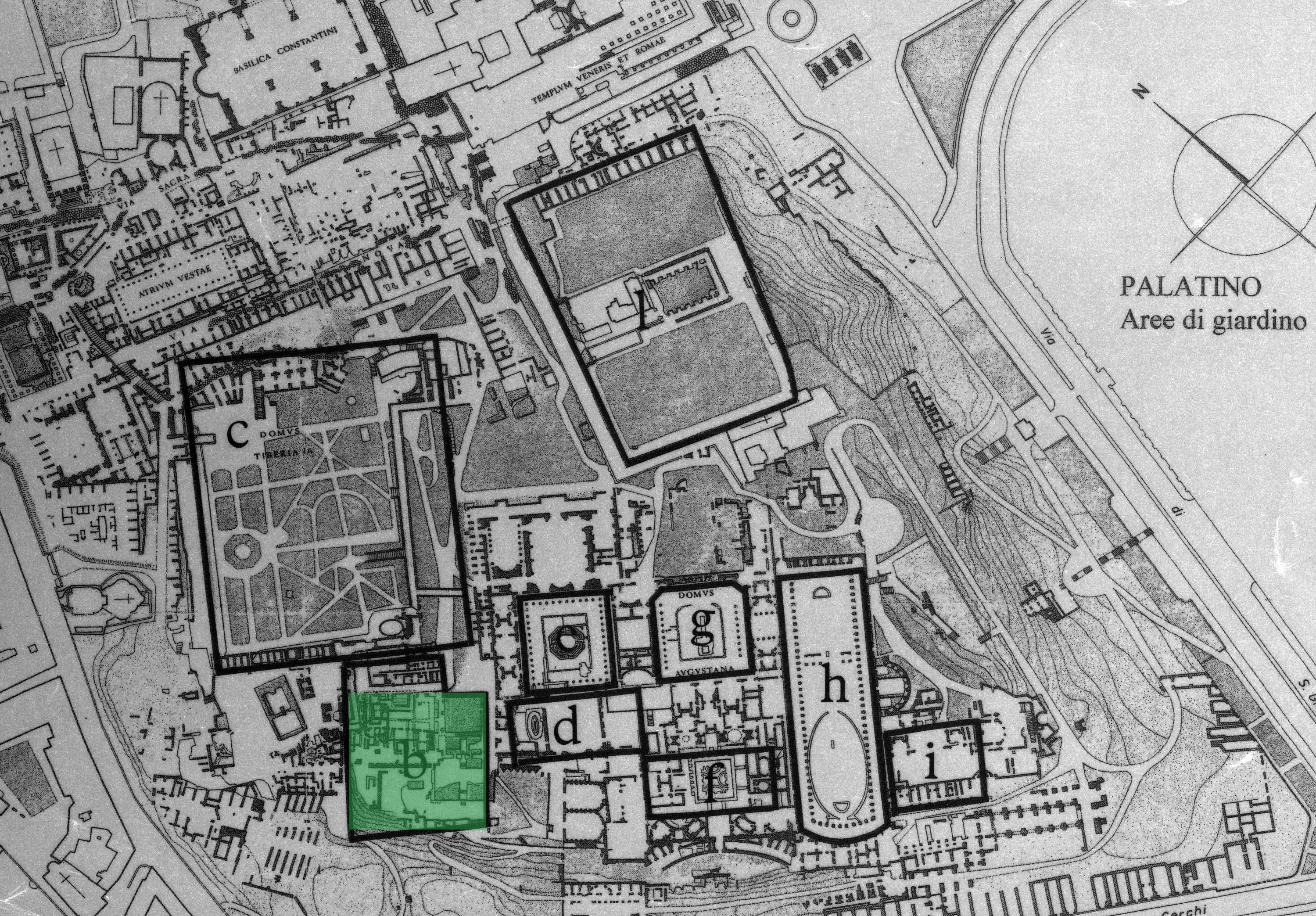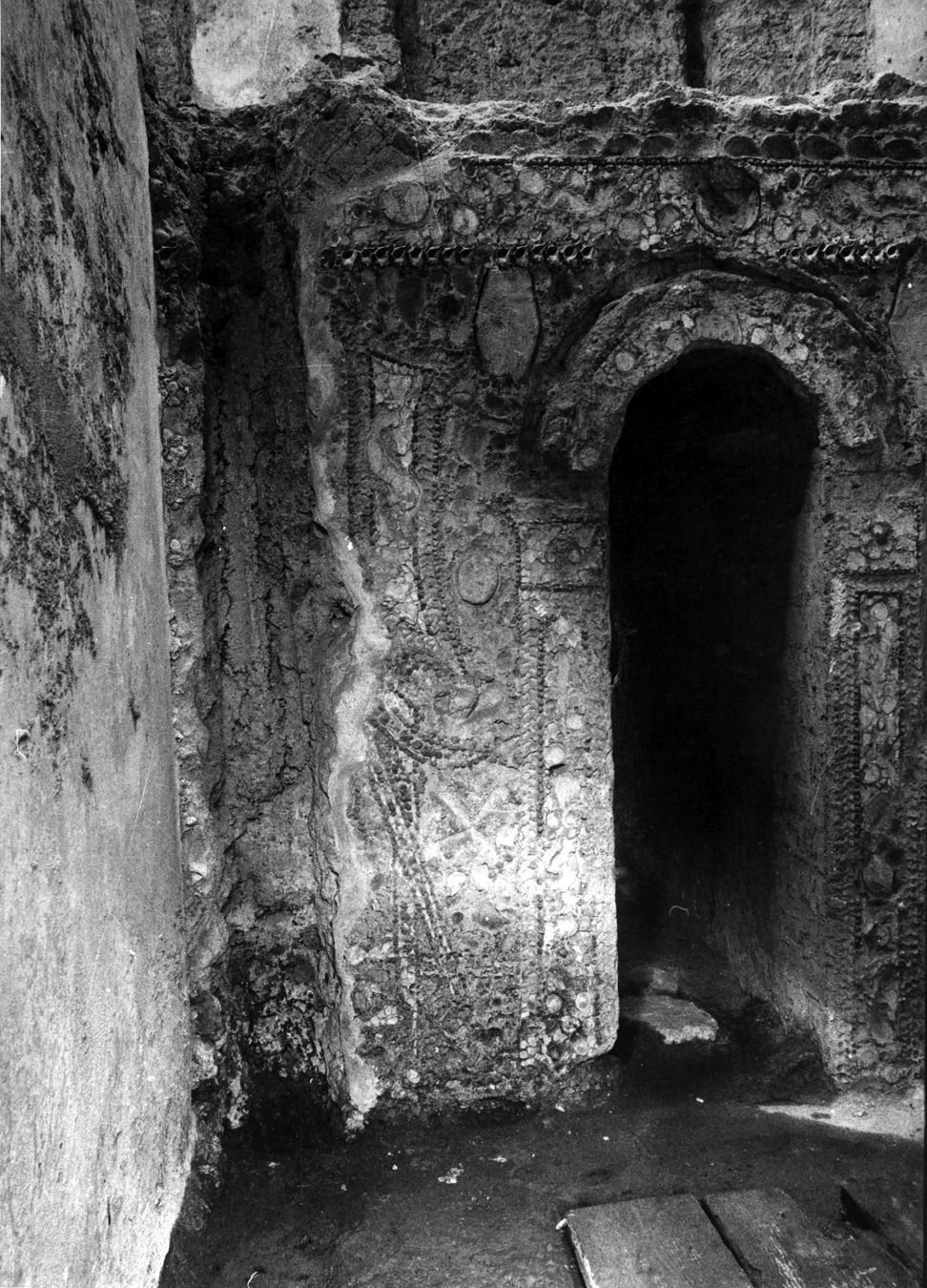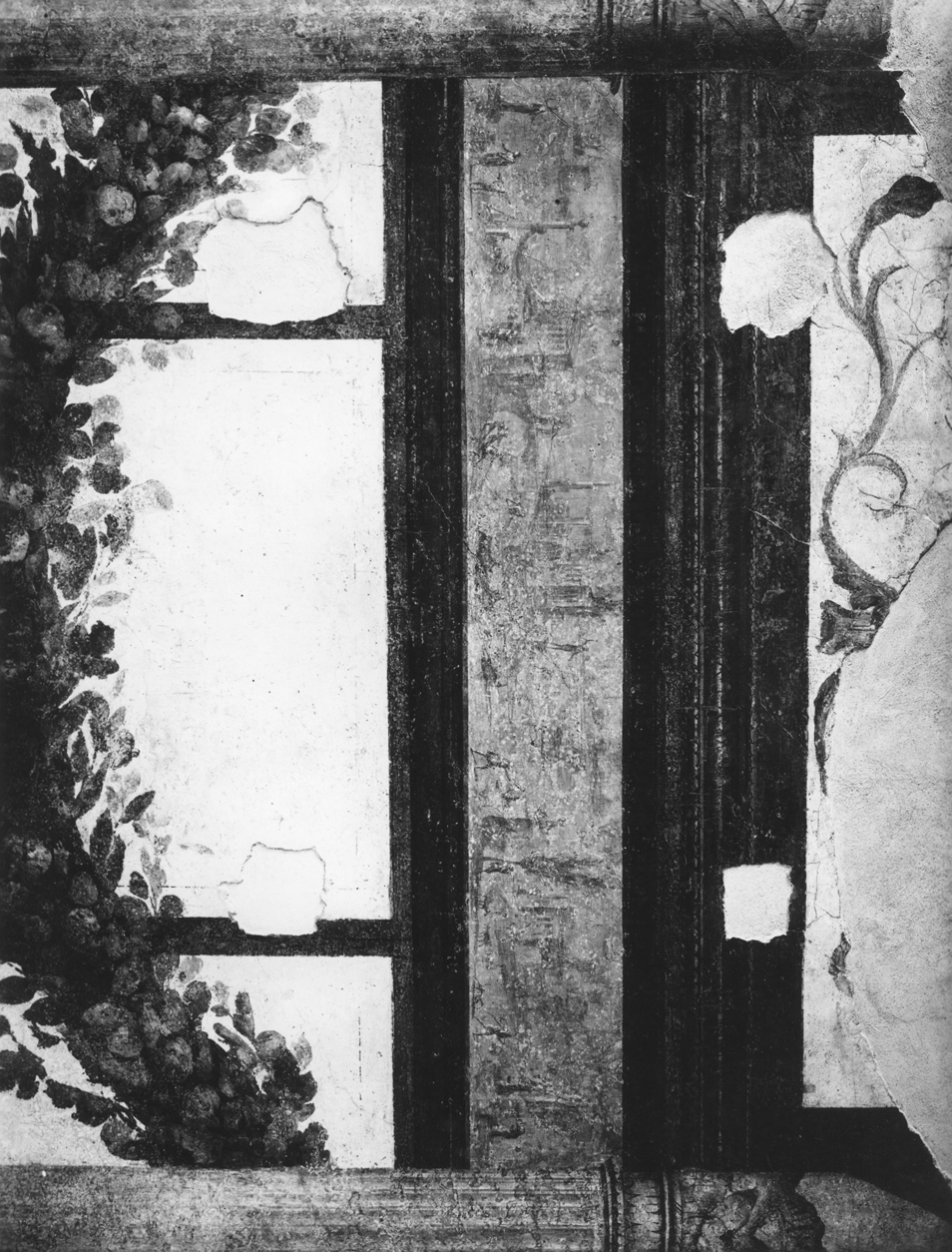House of Augustus
Province
Italia
Italia (Pleiades)
Italia, Regio I (Pleiades)
Location
Sublocation
Palatine
Mons Palatinus (Pleiades)
Garden
Garden of the House of Augustus, Palatine
Keywords
- alae
- domus
- festoon (decorative element)
- fresco (visual work)
- frieze (decorative element)
- mosaic (visual work)
- nymphaeum (garden structure)
- peristyle (Roman courtyard)
- porticoes
- princep
- topiary
- triclinium (room)
Garden Description
This important house, the Domus Augusti, which incorporated part of the earlier Domus of Quintus Hortensius (Vell. Pat. II.81 | Trans.), must have contained important gardens. Yet excavations carried out in the 1960s, although identifying remains as the house of the first [princeps]https://en.wikipedia.org/wiki/Princeps), Augustus, provided few elements connected with the presence of gardens (Fig 1.).
In addition to the peristyles, which likely were planted, a terrace called “Syracusae,” where according to Suetonius (Aug. 72.1-3 | Trans.) Octavian liked to retire, must have been a pavilion connected with an open green area. Similarly, a nymphaeum, lined with pebbles and shells, in a room that gives onto the western peristyle must have been part of a garden arrangement: it has similarities with mosaic fountains associated with gardens in houses at Pompeii (Fig. 2).
Furthermore, the Temple of Apollo, dedicated in 28 BCE (Cass. Dio. LIII.1.3 | Trans.) and physically connected with the House of Augustus, was surrounded by trees (Solin I, 8).
A significant element confirming the diffusion and refinement of the art of gardens under Augustus is the quantity of wall paintings showing landscape and vegetal motifs, including ones within the Augustan complex on the Palatine: for example, pine bundles were fitted like garlands between the pillars of a portico in “Room of the Pine Festoons;” and garlands of leaves, flowers and buds in various colors were hung between vertical bands in the “Room with Black Walls.”
In the House of Livia, supposed to be an apartment within Augustus’s dwelling, wall paintings in the right ala show rows of columns, between which are festoons laden with leaves, fruit tied by ribbons, and various hanging objects associated with and used in the countryside (Fig. 3). In the same room, the elegant frieze in monochrome yellow with lively open-air scenes against a background of countryside and buildings is a lovely example of landscape painting. In the paintings of the so-called Triclinium, painted landscape elements are seen amidst thick trees, meadows, lakes, and animals.
Finally, both the inventor of the ars topiaria, the art of shaping plants into varied forms by trimming their foliage, C. Matius, whom Pliny defines as "divi Augusti amicus" (HN 12.6), and the inventor of garden painting, Studius (or Ludius) (Pliny HN 35.116-117; Vitr. VII.5.2), were active during the Augustan period, thereby strengthening a connection between the emperor and garden spaces.
RELATED PHASES ON THE PALATINE:
Gardens of the Republican Domus (A)
Garden of the Domus Tiberiana (C)
Garden of the Neronian Palace (D)
Garden of the Domus Flavia (E)
Garden of the Domus Augustana (F,G)
Garden of the Palatine Stadium (H)
Garden of the Severan Complex (I)
Figures

Fig. 1. Plan of the Palatine with the indication of the garden areas (Drawing Coop. Modus. Reworking E. Boschi. Soprintendenza Archeologica di Roma, henceforth abbreviated as SAR).

Fig. 2. Nymphaeum inside the House of Augustus (Photo SAR).

Fig. 3. House of Livia. Right ala with detail of the “yellow frieze”. (Photo SAR).
Dates
1st century BCE
Excavation Date
1865-1870: P. Rosa 1937: A. Bartoli 1956: G. Carettoni
Bibliography
- M.A. Tomei, Augusto sul Palatino: Gli Scavi di Gianfilippo Carettoni. Appunti inediti (1955-1984), Milano, 2014. (worldcat)!
Contributor
M.-A. Tomei
Publication date
28 April 2021